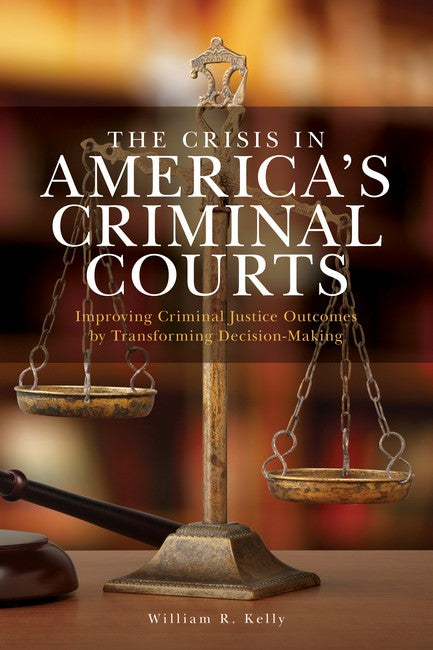William R. Kelly is professor in the Department of Sociology and director of the Center for Criminology and Criminal Justice Research at the University of Texas at Austin, Texas. He is the author of several books and articles on criminal justice, law, and policy, including Confronting Underground Justice: Reinventing Plea Bargaining for Effective Criminal Justice Reform (Rowman & Littlefield, 2018), From Retribution to Public Safety (Rowman & Littlefield, 2017), The Future of Crime and Punishment (Rowman & Littlefield, 2016), Criminal Justice at the Crossroads (2015), and Justice Under Pressure (1993).
Description
Chapter 1: The U.S. Criminal Court System Chapter 2: Decision Making in the Criminal Courts Chapter 3: The Front End of the Pretrial System: Arrest, Detention, and Bail Chapter 4: Promising Prosecutors: Reform in the DA's Office Chapter 5: Indigent Defense Chapter 6: Rethinking the Adversarial Approach Chapter 7: Putting the Pieces Together: Fundamental Pretrial and Court Reform
Reviews
Few would argue that the U.S. criminal justice system is fit for purpose. In 2016, it employed more than 2.1 million people and cost $240 billion, yet recidivism rates remain stubbornly high. Kelly argues that the tough-on-crime policies advocated by many states and district attorneys must be replaced with smart-on-crime, evidence-based reforms. He believes that prosecutorial discretion lies at the heart of reform and that by transforming decision making, prosecutors could effect change; he writes that pretrial and courtroom decisions are particularly ripe for reform. As more progressive prosecutors are elected, Kelly sees hope for meaningful change that focuses less on retributive justice and more on behavioral change models that acknowledge social circumstances associated with crime. He stresses that a key step is identifying criminality and developing assessment and intervention plans, rather than relying on case processing and intuitive decision making, which often allow judges to fall prey to their own biases, including racial bias. Replete with statistics and references, this engaging, compelling book will appeal to both lay and professional readers. * Library Journal *

